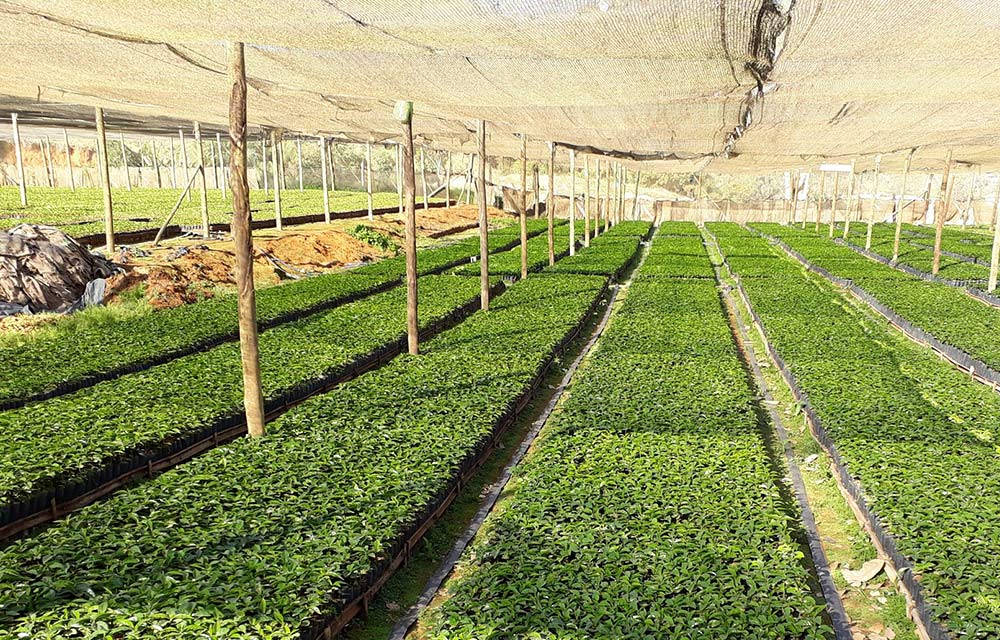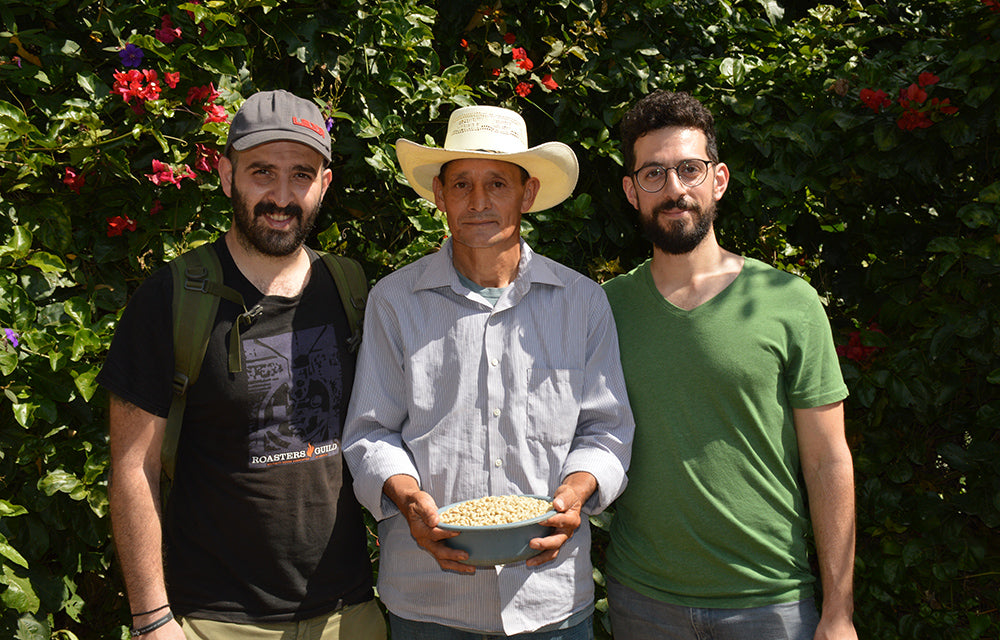Nothing remains hidden under the sun!
The journey of Dimello coffee to Brazil
In Brazil coffee trees have only the sun above them. They grow in strips and reach 1 meter in width and up to 3 meters in height.
Essentially, the tree is a trunk with braches full of fruit from top to bottom.

The cherry trees
The harvesting of the crop is carried out by mechanical collectors, which vibrate the tree as they pass through it. Thus, the more ripe and looser cherries fall and are gathered for sorting and processing. Concerning the majority of coffee cultivations in the country, harvesting is performed in this way and although it has received widespread criticism from coffee experts, it is also the reason why Brazil produces the volumes of coffee that we know today. In other words 1/3 of global production.

When coffee is the national product…
Coffee in Brazil is produced on large farms from traditional and wealthy families of great financial strength and know-how, often with the assistance of advanced technology. One of the most significant problems that the production of coffee in this country faces is water scarcity. For this reason, the coffees tend to be natural – dried under the sun without first being washed with water. But the market demands washed or semi-washed coffees. This forces producers to invest so as to keep the water in their area or to fully take advantage of the water in the aquifer.

Renewing the coffee trees
To achieve this they have modern irrigation networks, they reinforce the properties of the water with special fertilizers and electronically control their water supply needs to know exactly how much is needed for their own plantation.
Something else that characterizes Brazil is how they renew their coffee trees. When a tree becomes 10-15 years old and its productivity decreases, they cut it 20 centimeters from the ground, instead of uprooting it and planting a new one in its place.
As a result, they use the existing healthy root system that is capable of feeding the new tree that will grow there once again. This will occur in about two years. If a new tree was to be planted in its place, it would take 4-5 years for it to start producing.
With this type of area management it is always possible to have healthy and fruitful trees.


The coffee people
The farmers working on the farms of the country are practically very few, taking into account that the population is at a satisfactory educational level, hence the people do not easily choose to work in the farming industry.
Also, the wages of farming workers are not low, so the owners cannot afford to hire too many. This is one of the most important reasons that industrialization is constantly growing. As production becomes more automated, the need for working hands decreases and so do wages. But because the quality of the coffee is very good, certifications are not affected by the reduction of the workforce and this is happening in both Brazil and India. On the contrary, in Ethiopia this almost does not exist.
However, all the coffees there are organic, due to the fact that the use of insecticides and pesticides is forbidden. Therefore, Ethiopia may not hold certifications, but nevertheless it is capable of providing an organic and premium product.
The journeys shall continue.
Hold on until we turn to the next pages of the Dimello Coffee Diaries.
Stay tuned!



